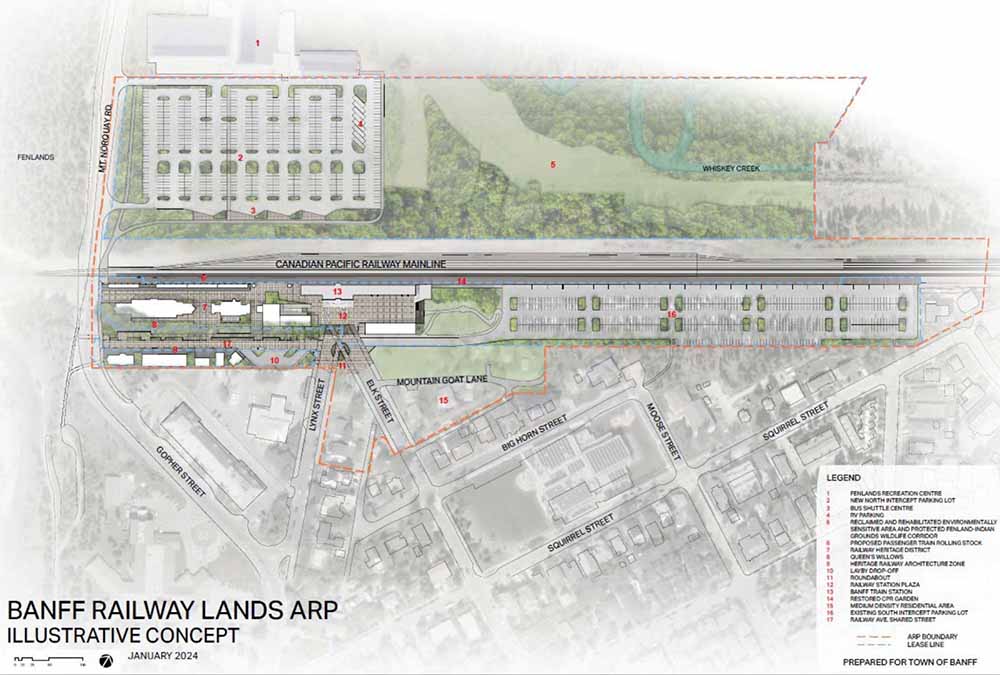History plays a big role in a community’s identity.
Without connections to the past, what separates one community from the next?
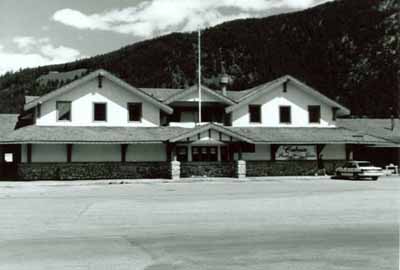
Banff is a treasure trove of rich history, from the Cave and Basin National Historic Site to the Whyte Residence.
While most people support preserving historic sites, Banff’s plan to revive a historic train station has raised some eyebrows.
The proposal introduced in September 2023 is called the Area Development Plan (ARP).
The ARP would transform Banff’s west entrance, reviving the town’s historic train station and adding two intercept parking lots on either side of the rail line.
There are also plans for a pedestrian-friendly plaza with restaurants and shops, a gondola from the redevelopment area to the Mt. Norquay Ski Resort, and a passenger rail connecting Banff to Calgary.
According to Banff, the goal of the ARP is to “create a vibrant, multimodal transportation hub and destination arrival centre that respects and enhances the historical, physical, and social context of the site.”
The Canadian Pacific Railway (CPR) Station that Banff wants to revive is a two-storey train station built in 1910 at the foot of Lynx Street.
The historic train station was part of Canada’s first transcontinental railway link and was once considered the hub of travel in the mountain national parks and across western Canada.
The ARP would breathe new life into the CPR Station, formally recognized as a historic site in 1991.
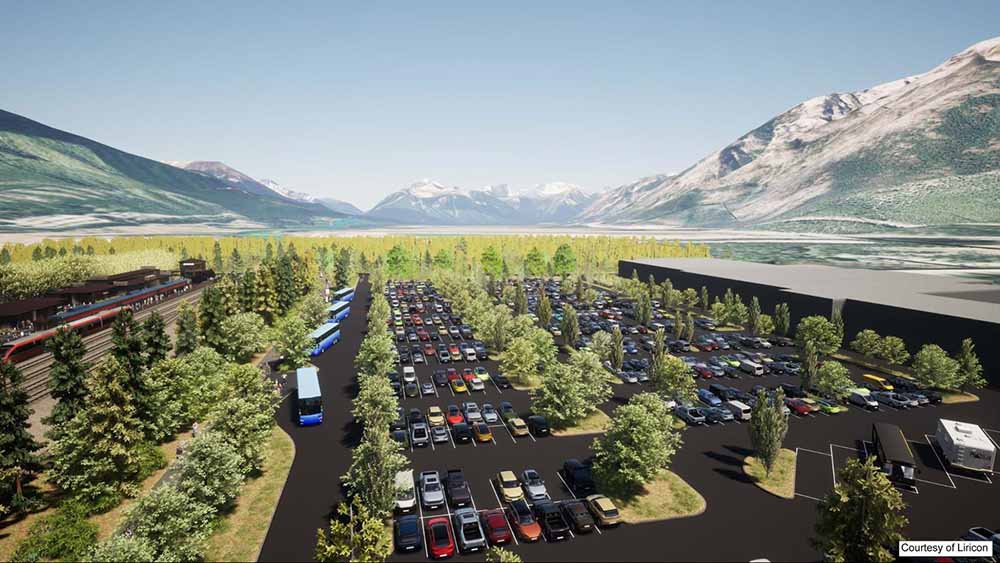

All Aboard! But Not Really
From a tourism perspective, the ARP would attract many visitors to Banff. But not everyone is on board with the town’s plan.
Last month, the Banff town council held a public hearing to receive input about the ARP. Dozens of residents attended the hearing, some supporting the plan and others criticizing it.
The ARP’s supporters include Johnathan Welsh, owner of Discover Banff Tours and Mark Walker, a resident with ties to the tourism sector.
Welsh believes the ARP will be a big step towards addressing the town’s traffic problems.
“We need mass transit solutions; we need to move people more efficiently. Personally, I can sit in my backyard, and I can see traffic on Spray Avenue,” Welsh told CBC News.
Meanwhile, Walker thinks the ARP will give the area the facelift it needs, claiming that “surrounding lands are a little bit on the ugly side.”
“With the train station being one of the first things visitors come across. It’s a shame to see it in the condition that it’s been in ever since I’ve come here,” said Walker.
Conversely, many environmentalists, including Adam Linnard and Harvey Locke, voiced their concerns about the ARP at the public hearing.
Linnard is from Canmore and is part of the Yellowstone to Yukon Conservation Initiative. Locke is a conservationist and Banff resident.
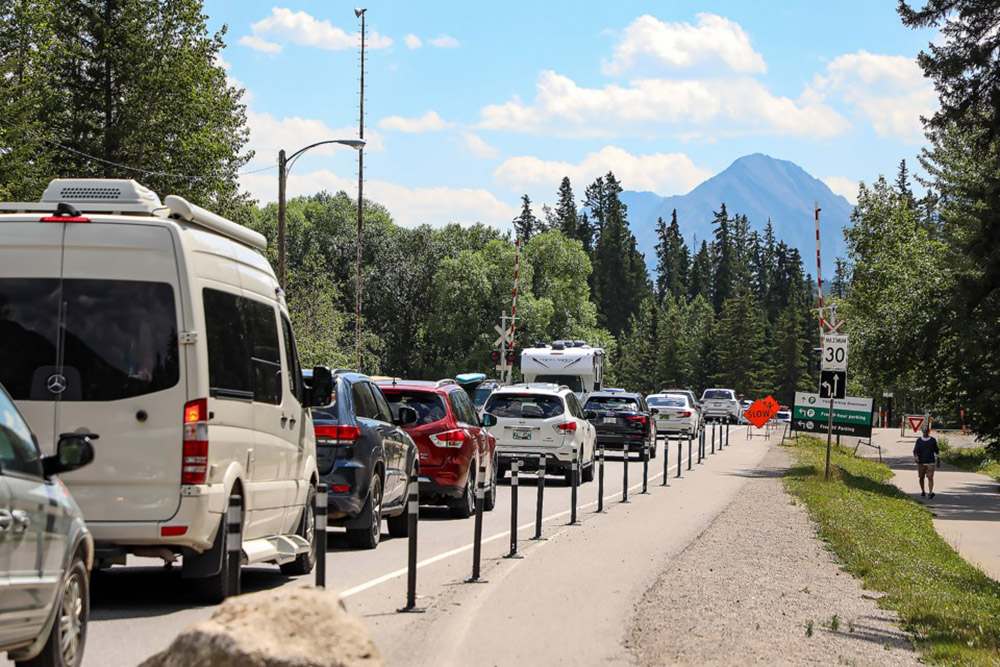

Should The ARP Be Derailed?
Linnard raised several environmental concerns at the public hearing.
One problem involved preserving the gravel bed floodplains at the bottom of the Bow Valley.
A floodplain is usually a flat area of land next to a river or stream, stretching from the banks of a river channel to the base of a valley.
Floodplains are important to the environment for many reasons. They create various habitats for fish and other animals.
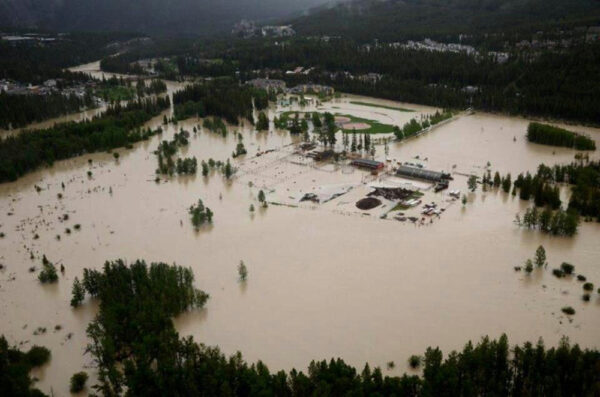

But they aren’t called floodplains for no reason.
Floodplains allow floodwaters to spread out and temporarily store excess water, which can help prevent floodwaters from reaching populated areas.
The destruction of floodplains is bad. But our province’s relationship with floodplains is far from peachy.
Gravel in floodplains is a hot commodity and one of Alberta’s most mined materials. We need gravel for many things, like roads and concrete.
Gravel is especially attractive because it’s cheap, easy to mine, and profitable. The Alberta government used to protect our floodplains from gravel companies.
However, the future of our floodplains changed in 2011 when the province introduced the Alberta Surface Water Body Aggregate Policy, which allowed extraction in sensitive river floodplains.
Gravel extraction won’t be happening in Banff National Park, but the 2013 floods that ravaged southern Alberta remind us of what happens when we destroy nature’s natural defence against floods.
And the 2013 floods also showed us that there are better decisions than building on flood plains to make.
Should we be building more infrastructure on floodplains when the risk of floods has increased with the changing climate?
Going, Going, Gondola!
Linnard and other conservationists raised concerns that the ARP’s proposed parking lot north of the train would result in ecological connectivity loss.
Ecological connectivity refers to an animal’s ability to travel between environments.
A 2022 study found that connectivity for wildlife in and around Banff National Park has fallen by 85 percent.
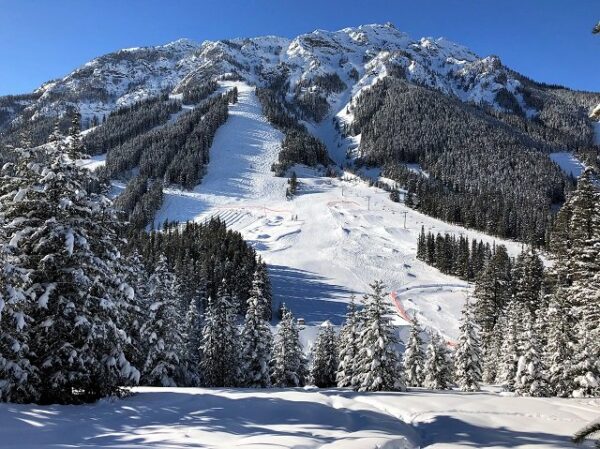

For Banff’s wildlife, moving between environments is like walking on a tightrope, and the ARP threatens to make the rope even narrower.
Locke is concerned about the ARP’s proposed gondola to the Mt. Norquay Ski Resort.
“At all times, for every purpose, this is a national park. Everybody in the valley knows that there was a big debate. Time to put that to bed. Do not approve of the gondola,” said Locke.
For the gondola to be approved, the ARP must first be accepted by the town council and then endorsed by Parks Canada.
However, at least not yet, Parks Canada has not been satisfied with the ARP.
“A gondola from the redevelopment site to the Mt. Norquay ski area has been assessed twice and found not to be feasible due to non-conformance with key park policy and legislation,” wrote Banff National Park superintendent Salman Rasheed in a letter to Banff’s town manager, Kelly Gibson.
The town council plans to host a second reading on April 22. If the council approves the plan, a third reading will be granted, and the plan will be forwarded to Parks Canada.
Too Convenient?
The applicant who proposed the ARP and that’s pushing for its approval is Liricon Capital Ltd., which also owns the Mt. Norquay Ski Resort.
If the ARP is eventually approved, it would benefit Liricon significantly. The gondola would bring more traffic to the company’s ski resort.
Liricon is also leasing 13 hectares of land from the CPR for the redevelopment. One of the company’s goals is a passenger rail connecting Banff to Calgary.
Restoring the historic CPR Railways Station seems like a convenient excuse to redevelop the surrounding area for Liricon’s benefit.
However, the ARP could go a long way toward boosting tourism in Banff while reducing traffic congestion with a passenger rail.
“It’s very easy to be excited and find a proposal like this one that comes in and claims to solve all these problems, but in doing that, we create a lot of risk when we could just step back,” Chloe Hahn, a conservation coordinator with the Canadian Parks and Wilderness Society told CBC News.
The ARP looks good on paper and has many positive aspects.
But that doesn’t mean we should rush in or ignore the plan’s shortcomings.
